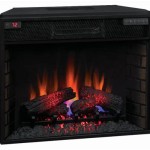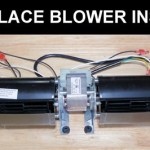Fireplace Ideas For Living Room
The fireplace, for centuries, has been a focal point in the living room, providing warmth, ambiance, and a natural gathering place. In modern homes, while heating systems have evolved, the fireplace retains its appeal, often serving as a design centerpiece that anchors the room's aesthetic. The following explores various fireplace ideas for the living room, encompassing different styles, materials, and functionalities, providing a comprehensive guide to incorporating this timeless feature into contemporary living spaces.
Understanding Fireplace Types
Before delving into specific design ideas, it is crucial to understand the different types of fireplaces available. Each type has its own advantages and disadvantages regarding installation, fuel source, and style.
Wood-Burning Fireplaces: A traditional choice, wood-burning fireplaces offer the classic ambiance of crackling logs and the scent of burning wood. They require a chimney for proper ventilation and regular cleaning to remove ash and creosote buildup. Due to environmental concerns and stricter regulations, wood-burning fireplaces may not be permitted in all areas. Opting for EPA-certified wood stoves can mitigate some of the environmental impact, as they burn wood more efficiently and produce less smoke.
Gas Fireplaces: Gas fireplaces are a convenient alternative to wood-burning models. They can be fueled by natural gas or propane and offer instant heat and easy ignition with the flick of a switch or remote control. Gas fireplaces typically require professional installation for gas line connections. They produce less mess than wood-burning fireplaces, and venting options are more flexible, allowing for installation in various locations. The flames in gas fireplaces are generally considered more consistent and predictable than those in wood-burning fireplaces.
Electric Fireplaces: Electric fireplaces are the easiest to install, requiring only a standard electrical outlet. They produce heat using electric coils and often feature realistic flame effects. Electric fireplaces are available in various styles, from traditional mantels to modern wall-mounted units. They are a safe option, as they do not produce real flames or emissions. Electric fireplaces are generally more energy-efficient than other types, especially when used for zone heating. While they provide visual ambiance, the heat output may not be as intense as that of wood-burning or gas fireplaces.
Ethanol Fireplaces: Ethanol fireplaces use liquid ethanol fuel, which burns cleanly and produces no smoke or ash. They do not require a chimney or venting, making them a versatile option for apartments or homes where traditional fireplaces are not feasible. Ethanol fireplaces are often designed with a contemporary aesthetic and can be freestanding, wall-mounted, or built-in. The heat output is generally lower than other types, and the cost of ethanol fuel can be a factor to consider. Safety is paramount, and it is essential to use only approved ethanol fuel and follow the manufacturer's instructions carefully.
Architectural Styles and Design Integration
Integrating a fireplace into the living room's overall design requires careful consideration of the architectural style and existing décor. The fireplace should complement the room's aesthetics while serving as a focal point.
Traditional Fireplaces: Traditional fireplaces often feature ornate mantels made of wood, stone, or marble. These mantels may include decorative carvings, moldings, and pilasters. Common fireplace surrounds include brick, stone, or tile. The hearth, the area in front of the fireplace opening, is typically made of a durable material like stone or brick. Traditional fireplaces often incorporate details such as fire screens, andirons, and toolsets. The overall design exudes a sense of classic elegance and timeless appeal.
Modern Fireplaces: Modern fireplaces are characterized by clean lines, minimalist designs, and a focus on functionality. Common materials include concrete, metal, and glass. Fireplace surrounds may be simple and unadorned, allowing the flames to be the primary visual element. Wall-mounted fireplaces and linear fireplaces are popular choices for modern living rooms. The color palettes tend to be neutral, with grays, whites, and blacks dominating the design. The overall aesthetic is sleek, sophisticated, and understated.
Rustic Fireplaces: Rustic fireplaces evoke a sense of warmth, comfort, and natural beauty. They often feature rough-hewn stone or reclaimed wood mantels. The fireplace surround may be made of fieldstone, river rock, or brick with a weathered finish. The hearth is often made of natural stone or slate. Rustic fireplaces may incorporate elements such as exposed beams, wrought iron details, and antique accessories. The overall design creates a cozy and inviting atmosphere, reminiscent of a country cottage or mountain lodge.
Transitional Fireplaces: Transitional fireplaces blend elements of both traditional and modern styles. They may feature a simple, clean-lined mantel made of wood or stone, combined with a contemporary fireplace insert. The fireplace surround may incorporate a mix of materials, such as brick and metal. Transitional fireplaces often use a neutral color palette with pops of color to add visual interest. The overall design strikes a balance between classic elegance and modern sophistication.
Material Choices and Customization Options
The choice of materials for the fireplace surround, mantel, and hearth significantly impacts the overall look and feel of the living room. A wide range of materials are available, each with its own unique characteristics and aesthetic qualities.
Stone: Stone fireplaces offer a timeless and durable option. Natural stone, such as granite, marble, and limestone, provide a luxurious and elegant look. Manufactured stone veneers offer a more affordable alternative while still providing the visual appeal of natural stone. Stone fireplaces can be customized with various textures, colors, and patterns. The material's thermal mass helps retain heat, providing warmth long after the fire has died down.
Brick: Brick fireplaces offer a classic and versatile option. Brick can be painted, stained, or left in its natural state to achieve different looks. Brick fireplaces can be used in various architectural styles, from traditional to modern. The material is durable and relatively low-maintenance. Different brick patterns, such as herringbone or stacked bond, can add visual interest.
Wood: Wood mantels and surrounds provide warmth and character to the living room. Wood can be stained, painted, or left with a natural finish. Reclaimed wood adds a rustic touch and a sense of history. Custom-built wood mantels can be designed to match the room's existing décor. Wood fireplaces require proper fireproofing and clearances to ensure safety.
Concrete: Concrete fireplaces offer a modern and industrial aesthetic. Concrete can be molded into various shapes and sizes. The material can be stained or polished to achieve different finishes. Concrete fireplaces are durable and fire-resistant. They can be paired with other materials, such as metal or glass, to create a unique look. The thermal mass of concrete helps retain heat.
Tile: Tile fireplaces offer a wide range of design possibilities. Tile is available in various colors, patterns, and textures. Mosaic tiles can create intricate and decorative designs. Tile is durable and easy to clean. It can be used as a fireplace surround, hearth, or accent detail. Tile is a versatile option that complements various architectural styles.
Metal: Metal fireplaces offer a sleek and modern aesthetic. Metal can be used for fireplace surrounds, mantels, or decorative accents. Stainless steel, copper, and blackened steel are common choices. Metal fireplaces can be customized with various finishes and textures. The material is durable and fire-resistant. Metal fireplaces often incorporate clean lines and minimalist designs.
In addition to material choices, the fireplace can be further customized with features such as built-in shelving, recessed lighting, and integrated media storage. These features enhance the functionality of the fireplace while adding to its aesthetic appeal. Custom fireplace screens, doors, and toolsets can also be chosen to complement the overall design.
Enhancing Ambiance and Functionality
Beyond its aesthetic appeal, a fireplace can significantly enhance the ambiance and functionality of the living room. Considerations should include lighting, seating arrangements, and integration with entertainment systems.
Lighting: Strategic lighting can accentuate the fireplace and create a warm and inviting atmosphere. Recessed lighting above the fireplace can highlight its architectural features. Sconces or wall lamps on either side of the fireplace can provide ambient lighting. A fireplace screen with built-in lighting can add a decorative touch. Dimmer switches allow for adjusting the lighting levels to create different moods.
Seating Arrangements: The fireplace is a natural focal point for seating arrangements. Arranging furniture around the fireplace creates a cozy and conversational space. Placing sofas and chairs facing the fireplace encourages interaction. A coffee table or ottoman in front of the fireplace provides a convenient surface for drinks and snacks. Throw pillows and blankets add warmth and comfort to the seating area.
Integration with Entertainment Systems: In modern living rooms, the fireplace is often integrated with entertainment systems. A television can be mounted above the fireplace, creating a central entertainment hub. Built-in shelving or cabinets can house media equipment and accessories. Concealing wires and cables ensures a clean and uncluttered look. Integrating the fireplace with a sound system enhances the viewing experience.
Accessories and Décor: Fireplace accessories and décor can add personality and style to the living room. Fireplace screens, toolsets, and log holders are functional and decorative elements. Artwork, mirrors, and decorative objects can be displayed on the mantel. Seasonal decorations, such as holiday garlands and ornaments, can be added to the fireplace during special occasions. Choosing accessories that complement the room's overall style enhances its visual appeal.
By carefully considering these factors, the fireplace can be transformed from a simple heating source into a stunning focal point that enhances the ambiance and functionality of the living room. The possibilities are endless, allowing homeowners to create a space that reflects their personal style and preferences.

36 Fireplace Decor Ideas Modern Mantel

Sprucing Up Your Home S Living Room With Fireplace By Expert

40 Best Fireplace Décor Ideas Mantel

Fireplace Design Ideas For Your Home Designcafe

11 Appealing Living Room Designs With A Fireplace

36 Fireplace Decor Ideas Modern Mantel

7 Inspirational Living Room Layout Ideas

Decorating Styles Defined Part 1 Living Room Remodel Family Design Farm House

Lovely Painted Brick Fireplaces In The Living Room Beautiful Homes

Unveiling The 63 Best Modern Fireplace Design Ideas In 2024 Living Room With
Related Posts








